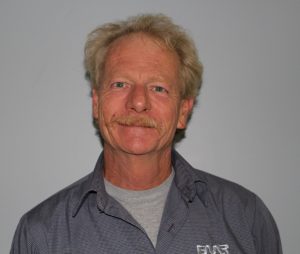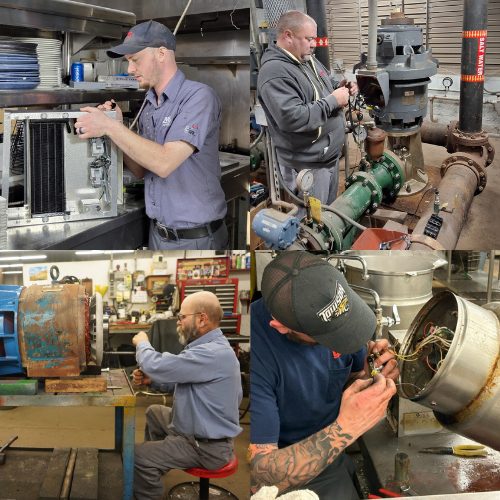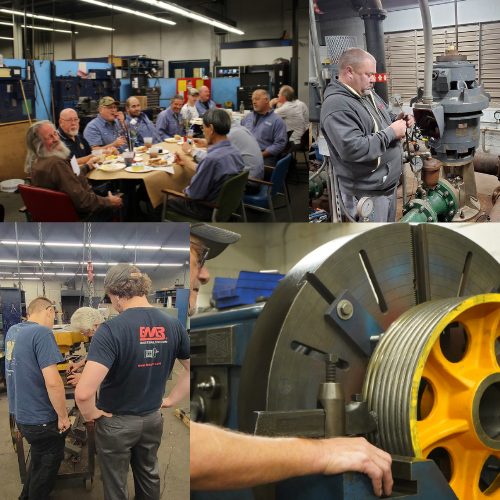HVAC service insights

Bob Bazzoli, Field Service Supervisor
HVAC service insights
Q&A with Bob Bazzoli, Field Service Supervisor, EMR Delaware Valley
Commercial application HVAC service is one of our specialties. Field Service Supervisor, Bob Bazzoli, pulling on his 10 years of experience at EMR, provides insights into keeping HVAC equipment up to par.
Q1 – What type of cleaning schedule should be maintained?
Location, location, location – HVAC systems are more susceptive to environmental factors and the air quality that is being conditioned for an establishment. Cleaning schedules should be adjusted based on those environments. Things to ask yourself:
- Are my units in proximity of where there is grease or wood smoke being exhausted? Grease or wood smoke coat condenser coils and reduce the heat exchange on the coils reducing capacity. In this case, a more aggressive coil cleaning schedule would be implemented.
- Are my units conditioning air for a business that has high indoor dispersed particulates? Flour and sugar dust clog filters and develop build-up on evaporator coils. In this case, filters would need to be changed on a more frequent schedule. This applies to non-food locations such as repair and manufacturing facilities too.
- Are my units located in a wooded or rural area where vegetation is abundant? Pollen deposits, grass and leaves coat and clog the condenser coils the same as construction debris. In this case, both filters and condenser coils need special attention.
Q2 – What is the average service life of a unit?
The rule of thumb from major manufacturing companies for well-maintained units is 15-20 years. But again, environmental conditions play a major role in the service life. For instance:
- Units near the shore (read: salt water spray) have a diminished life of 5-10 years
- Units that are processing air with chemicals such as fragrances, cleaners and solvents, can also be expected to have a shorter span of operation
Q3 – What are some signs a service agent should be called?
Unfortunately, most commercial units are located on the roof and do not lend themselves to physical inspection on a weekly or monthly basis. Noise is the first indicator of a unit needing attention.
- Is it rattling or squealing while operating?
- Has the air quality or comfort level changed noticeably?
- Does the unit sound as if it is whistling at the return vents?
- Do you have moisture build up at the supply vents?
- If there are multiple units, are all of the zones balanced in temperature?
These are just a few indicators of problems brewing before a failure. It is best to be on a regular preventive maintenance program to catch routine issues before they become major issues.
Q4 – What are signs that a replacement is needed?
When the cost of the repair exceeds 60-70% of the cost of a new unit, it is time to replace. Like with anything though, there are exceptions to this rule. In cases where the repair cost is lower but the age of the unit lends itself to replacement, it’s time to replace. Replacing an aged unit with a new one usually gives the customer the latest technology and efficiency. Think of any other product, how has technology changed it in the last 20 years – phones, cars, internet – 20 years is a lifetime.
Repairing an older unit can cascade issues beyond the initial repair and stress older components causing a future failure, and the depreciation factor may be relevant to the customer. Upgrading the unit (read: increasing the tonnage) may compensate for additional heat/cooling loads that were not there when the unit was first installed, like the addition of more space, lights and equipment. Some of the newer units can be monitored from a mobile device, keeping actual running conditions and information at your fingertips.
Q5 – What are the most common mistakes operators make with this equipment and the consequences?
Exceeding the normal user tasks & upkeep can have very expensive consequences. Units DO NOT lend themselves to untrained tinkering. They are highly efficient and only those that are trained in the service and repair of these units should be looking at them past the point of a preventive maintenance job. Most units are now board driven; tampering with these components can short/ground a board, costing hundreds of dollars not to mention any component or safety downstream from the board, including expensive thermostats (wired or wireless). Fixing a unit after the owner has already tried to handle the job themselves may extend the time/cost needed for repair.
Q6 – What should operators know about using and caring for this equipment to get the most service life out of it?
- Read the user manual, not the installer or service manual.
- Call a reputable service agent that you trust who can explain things to you in terms that you are comfortable with.
- Schedule a regular Preventive Maintenance (PM) program to extend the life of your unit. Units are on the roof and therefore out of sight, out of mind. Have your service agent handle the PM scheduling for you on a regular, timed basis making it one less thing to worry about.
- Buy products with a proven history and where the parts are readily available.




